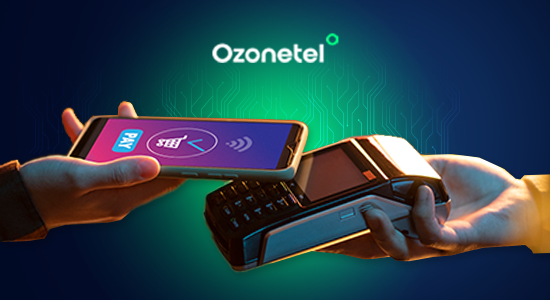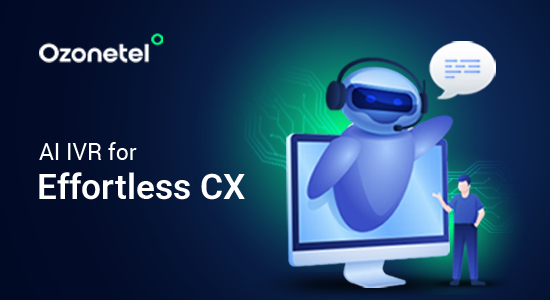- Resources
- What is Digital Experience Monitoring?
What is Digital Experience Monitoring?

While technology has simplified many aspects of our lives, it has also introduced new complexities. To provide a superior experience, businesses are always on the lookout for better, faster, and more accessible technological solutions to enhance their efficiency and productivity.
Digital Experience Monitoring (DEM) addresses these challenges by focusing on tracking and improving the digital interactions of both customers and employees. As technology diversifies, DEM helps IT departments meet expectations and ensure positive work experiences by identifying and addressing factors that impact productivity and user satisfaction.
Digital Experience Monitoring is a powerful solution that largely focuses on tracking and improving the digital interactions of both customers and employees.
It combines three key functions-:
- application performance monitoring
- user behavior analysis
- real-time visibility into digital interactions
By integrating crucial data across diverse digital environments, Digital Experience Monitoring provides IT teams with the insight and resources needed to maintain workplace technology while prioritizing employee experience. And for your remote workforce, DEM helps you ensure their collaboration tools and cloud applications run smoothly, boosting their productivity.
But what is DEM? Why is it so significant? And how does it work? Continue reading to discover answers and insights in this comprehensive guide on digital experience monitoring.
In this article, we will explore:
Digital Experience Monitoring Definition
Digital Experience Monitoring (DEM) is the process of tracking and evaluating how users interact with digital platforms, aiming to enhance service performance and elevate user satisfaction by identifying and resolving usability issues. It focuses on understanding user behavior and improving their experience, much like mapping a customer’s journey through interactions. It’s crucial for maintaining high-quality digital services.
In other words, DEM lets you look into the digital lives of your customers and agents, empowering you to optimize their experiences in real time. That’s precisely what DEM offers—a 360-degree customer view and how they interact with your applications and services
How Does Digital Experience Monitoring Work?
Digital Experience Monitoring collects and analyzes data from various touchpoints to provide IT teams with insights into the end-user experience.
Here’s a brief overview of how DEM operates:
First, an agent is installed on physical or virtual endpoints, such as employee devices or customer-facing applications. This agent gathers and analyzes telemetry data, including hardware and software performance, resource usage, connection strength, and other relevant metrics. The collected data is then transmitted to a central location, either cloud-based or on-premises, where a database analyzes it.
With this data, IT administrators gain real-time insights into the user experience. They can monitor and identify network problems, performance slowdowns, or application outages that may impact employees’ productivity or customers’ interactions with the company’s digital properties. With these insights, IT teams can proactively solve issues before significantly impacting end-users, ensuring a seamless and optimal digital customer experience.
DEM solutions provide IT leaders with historical and predictive data, enabling them to identify areas where their products, services, or internal applications may be underperforming or facing usability issues. This data-driven strategy allows organizations to optimize their product development, improve business operations, and enhance the overall digital experience for employees and customers.
Importance of Digital Experience Monitoring
Instead of simply gathering data, digital experience monitoring enables organizations to understand what that data means and how to use it to improve performance. This could include redesigning a website to be more user-friendly or optimizing a mobile app to enhance load times.
Here are a few more pointers that highlight the importance of digital experience monitoring:
Enhancing Efficiency and Productivity
DEM benefits external customers and empowers your internal workforce. Imagine your remote employees struggling with sluggish cloud applications or collaboration tools, hindering their productivity. Digital experience monitoring provides real-time insights into the performance of these critical applications, enabling IT teams to identify bottlenecks and optimize resources for a smoother and more efficient work environment. This translates into improved employee satisfaction, reduced downtime, and increased overall productivity.
Cost Optimization
Digital experience monitoring can also contribute to cost optimization by streamlining IT operations and reducing the need for multiple disparate monitoring systems. By consolidating monitoring capabilities into a unified platform, you can achieve greater efficiency and reduce redundancies. Additionally, DEM’s proactive approach to issue identification and resolution can help minimize costly downtime and outages, further contributing to cost savings.
Driving Data-Driven Decision-Making
One significant advantage of digital experience monitoring is its ability to provide comprehensive data and analytics about user behavior and digital performance. This wealth of information can be leveraged to make informed, data-driven decisions that are in alignment with your business objectives. For example, if DEM reveals that a particular feature on your mobile app is causing high abandonment rates, you can prioritize improvements or updates to enhance user engagement and retention.
Ensuring Optimal User Experience
By continuously monitoring user interactions and performance metrics, DEM enables you to proactively identify and address any issues before they impact user satisfaction. For instance, if a customer encounters slow page load times or frequent crashes while browsing your e-commerce website, digital experience monitoring can quickly pinpoint the root cause, allowing you to resolve the problem promptly and enhance the overall shopping experience.
Types of Digital Experience Monitoring Tools

Numerous factors might cause a poor user experience, and not all of them are under your control. Glitches could be caused by a user’s device or browser limits or a local problem affecting the cloud. Understanding why an issue is occurring is the first step toward solving it or providing resources to the user, and DEM tools can assist in identifying problems and suggesting solutions.
Some of the most common DEM tools are:
Application Performance Monitoring (APM) Tools
Application Performance Monitoring (APM) tools provide insights into application functionality, including response times, error rates, and performance analysis. These tools play an important role in monitoring application performance and identifying areas for optimization. APM tools are often integrated with other DEM solutions to provide a comprehensive overview of the user’s digital experience.
Synthetic Transaction Monitoring (STM) Tools
Synthetic Transaction Monitoring (STM) tools simulate user actions and transactions by executing HTTP commands and analyzing the system’s response. This proactive monitoring approach acts as a testing ground before real users interact with the platform, allowing organizations to identify and resolve potential issues before they impact end-users.
Network Performance Monitoring and Diagnostics (NPMD) Tools
NPMD tools monitor and optimize network performance, analyzing end-to-end network traffic, packet loss, latency, and other network-related elements. While primarily centered on network health, these tools can be combined with DEM solutions to provide a comprehensive view of the factors impacting overall user experience.
Real User Monitoring (RUM) / End User Experience Monitoring (EUEM)
These tools analyze the interactions and behavior of actual users to gather performance metrics and insights. Unlike synthetic monitoring, these tools leverage real user data, typically through JavaScript-based monitoring or browser plugins, to track user behavior and recognize pain points in the digital experience.
Endpoint Monitoring Tools
Endpoint monitoring tools analyze user devices’ performance, availability, and security, such as laptops, mobile phones, and desktops. By monitoring CPU, storage, connectivity, and security from these endpoints, these tools can diagnose and resolve issues that may be affecting user experience. A comprehensive endpoint monitoring solution can help organizations ensure optimal performance and security across all user devices.
Benefits of Digital Experience Monitoring

The benefits of DEM are extensive and far-reaching, spanning enhanced user experiences, improved website performance, increased revenue and ROI, and, ultimately, better business outcomes.
“Without the supporting technical data, you’re missing a 360 view of what’s actually happening, making it impossible to understand why visitors are bouncing,” says Andrew, VP of Product Success
Let’s look at these in a little more detail:
Accounting for Decentralized User Experiences
The distributed working environment allows users to access digital services from various locations and devices, including homes, offices, shared workspaces, and mobile devices. DEM provides a unified framework to monitor and assess these decentralized user experiences, ensuring consistent performance and quality regardless of the user’s location or device. This capability is particularly valuable for organizations with remote or hybrid workforces, enabling them to optimize the extended office experience.
Proactive Issue Identification and Resolution
One of the primary benefits of Digital Experience Monitoring (DEM) is its ability to identify and resolve potential issues before they impact users proactively. DEM solutions can detect anomalies or degradations in real time by continuously monitoring user interactions and performance metrics across various touchpoints.
This early warning system allows IT teams to address problems swiftly, minimizing or preventing user experience disruptions. For example, suppose DEM detects a sudden spike in page load times for a critical e-commerce website. In that case, it can alert the appropriate team to investigate and solve the problem before it causes customer frustration and abandoned transactions.
Aggregating Data for Improved Insights
DEM platforms often incorporate capabilities for aggregating and analyzing data from multiple digital touchpoints, customer portals, and other sources. DEM solutions can uncover new insights and create a comprehensive picture of the user experience by consolidating this data through digital asset management. This aggregated data can help businesses identify areas for improvement, optimize digital strategies, and enhance the customer journey across all channels and touchpoints.
Efficient Troubleshooting and Reduced Downtime
When issues do arise, DEM tools offer deep visibility into the underlying factors affecting digital experiences. This comprehensive view facilitates swift and efficient troubleshooting, enabling IT teams to promptly identify and resolve the root cause of problems.
By minimizing downtime and disruptions, DEM helps organizations maintain productivity and avoid costly service outages or performance degradation consequences. For instance, if a cloud-based collaboration tool used by remote employees suddenly becomes unresponsive, DEM can quickly pinpoint whether the issue stems from the application itself, network connectivity, or infrastructure constraints, allowing for targeted resolution.
Complementing Existing Monitoring Tools
DEM solutions are designed to complement and enhance existing monitoring tools like APM (Application Performance Monitoring) and NPMD (Network Performance Monitoring and Diagnostics). By combining DEM with these tools, organizations can gain a comprehensive, end-to-end picture of their digital ecosystem, bridging the gap between traditional monitoring and user experience insights. This holistic approach enables businesses to make better decisions based on a complete understanding of their digital performance.
Addressing Non-Human Users and Service Dependencies
With the rise of the Internet of Things (IoT) and microservices architectures, non-human users, such as machines and other applications, increasingly consume digital services. DEM solutions can account for these non-human users, ensuring frictionless service delivery and optimal outcomes.
Additionally, DEM helps organizations address service chain dependencies by providing visibility into potential bottlenecks or issues across the entire service delivery cha
How Digital Experience Monitoring Tools Help Improve CX
Customer experience (CX) metrics enable organizations to provide the most seamless customer interaction and support mechanisms. Accurate data allows organizations to make data-driven decisions, whether to improve their products or services or substantially change their customer support.
However, suppose the customer experience platforms begin to malfunction or fail to address the issue for an extended period. In that case, the resulting data can become highly unpredictable, potentially leading any organization to bankruptcy over time.
At this point, digital experience monitoring can help you out! By monitoring user interactions across various digital touchpoints, DEM tools enable businesses to optimize and personalize their digital offerings, fostering long-term customer relationships and driving overall satisfaction. Here are some more ways how DEM tools help improve your customer experience:
Comprehensive Customer Journey Analysis
DEM tools empower businesses to track and analyze customer journeys comprehensively. By monitoring user interactions across websites, mobile apps, and other digital channels, DEM provides a holistic view of the customer experience. This data-driven approach allows organizations to identify bottlenecks, friction points, and areas for improvement, enabling strategic decision-making to elevate digital experiences.
Personalization and Optimization
With the insights gathered through DEM tools, businesses can tailor their digital offerings to meet customers’ unique needs and preferences. Organizations can personalize user interfaces, content, and features by understanding customer behavior patterns, leading to enhanced engagement and satisfaction. Additionally, DEM tools help identify performance issues, such as slow loading times or inconsistent user interfaces, enabling businesses to optimize their digital services for seamless experiences.
Omnichannel Experience Enablement
DEM tools play a pivotal role in enabling businesses to deliver omnichannel experiences by monitoring user interactions across various touchpoints. By identifying and addressing inconsistencies or gaps in the customer journey, organizations can ensure a seamless and unified experience regardless of the channel or device used.
Conclusion
As technology continues to evolve, the significance of digital experience monitoring (DEM) cannot be overstated. DEM empowers organizations to truly understand how their customers and employees interact with digital applications and services, uncovering areas for optimization and improvement.
By implementing a robust DEM strategy, businesses gain real-time visibility into user behaviors, experience metrics, application performance, network performance, and infrastructure performance. This approach enables organizations to proactively identify and address issues that could potentially diminish user satisfaction, ensuring a consistently seamless and high-quality digital experience.
Want to see what Ozonetel can do for your company? Sign up today for a free 7-day trial.
Frequently Asked Questions
Digital experience refers to a user’s overall perception and interaction when using digital platforms such as websites, mobile apps, or digital services. It encompasses usability, accessibility, design, performance, and the emotional response elicited during the interaction.
Digital monitoring involves continuously observing and analyzing digital systems and environments to ensure optimal performance, security, and user experience. It includes tracking metrics such as uptime, response times, error rates, and user interactions to identify and resolve issues proactively.
Digital experience monitoring works by using specialized tools and technologies to collect and analyze data on how users interact with digital platforms. It provides insights into performance issues, user behavior, and potential areas for improvement by monitoring real-time metrics and simulating user interactions to detect and troubleshoot problems before they impact the user experience.
Prashanth Kancherla
Chief Operating Officer, Ozonetel Communications
Over the past decade, Prashanth has worked with 3000+ customer experience and contact center leaders...
Chief Operating Officer, Ozonetel Communications
Over the past decade, Prashanth has worked with 3000+ customer experience and contact center leaders to comprehensively understand the need for effective and efficient customer communications at every step of their journey with a brand. Deeply embedded in today’s CCaaS ecosystem, he has been instrumental in Ozonetel's growth and contributed in various roles including product management, sales, and solution architecture.







